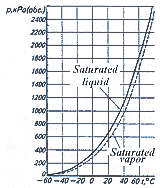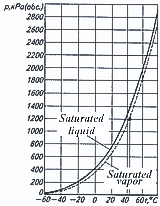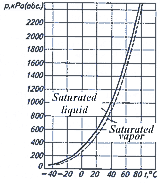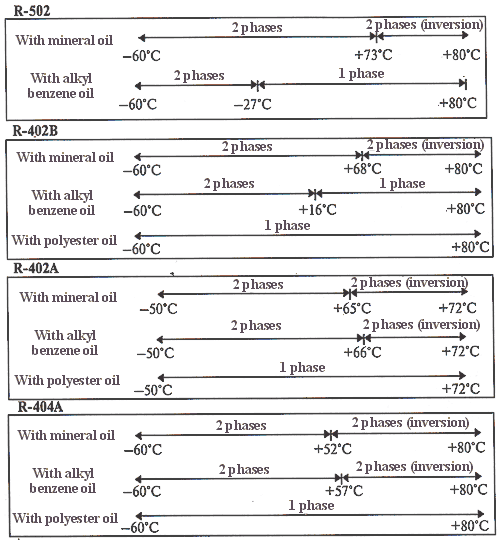

| NEWS | |||||||
| ABOUT | |||||||
| PRODUCTS AND SERVICES | |||||||
|
| |||||||
| PLACE AN ORDER | |||||||
| DOWNLOAD | |||||||
| HELPFUL HINTS | |||||||
| FAQ | |||||||
| LINKS | |||||||
| SEARCH | |||||||
| SITE MAP | |||||||
| CONTACT | |||||||
| ðóññêèé |
Alternative multi-component refrigerants of HCFC groups
| |||||||||||||||||||||||||||||||||||||||||||||||||||||||||||||||||||||||||||||||||||||||||||||||||||||||||||||||||||||||||||||||||||||||||||||||||||||||||||||||||||||||||||||||||||||||||||||||||||||||||||||||||||||||||||||||||||||||||||||||||||||||||||||||||||||||||||||||||||||||||||||||||||||||||||||||||||||||||||||||||||||||||||||||||||||||||||||||||||||||||||||||||||||||||||||||||||||||||||||||||||||||||||||||||||||||||||||||||||||||||||||||||||||||||||||||||||||||||||||||||||||||||||||||||||||||||||||||||||||||||||||||||||||||||||||||||||||||||||||||||||||||||||||||||||||||||||||||||||||||||||||||||||||||||||||||||||||||||||||||||||||||||||||||||||||||||||||||||||||||||||||||||||||||||||||||||||||||||||||||||||||||||||||||||||||||||||||||||||||||||||||||||||||||||||||||||||||||||||||||
| |||||||||||||||||||||||
R401A refrigerant. It is a zeotrope average pressure blend with temperature glide Dtgl= 4...5Ê. Physical qualities of this blend are given in tables down, and characteristics of R124 refrigerant on the saturation line are given in Appendix 11. R401A saturated vapor pressure is a bit higher than that of R12 (correspondingly 1,27 and 1,08 ÌPà at 45 oÑ).

Dependence of saturated pressure on temperature for R401A |
Depending on operation conditions, cold-productivity of the refrigeration system, where there has been used R12 before, is 5...8 % increased. R401A refrigerant is not compatible with mineral oils, therefore, during retrofit it is necessary to charge the refrigeration aggregate with alkylbenzene oil. Substitution of a filter-dehydrator is also required.
The refrigerant is recommended to use for retrofit in high - (higher than Î oÑ) and mean-temperature refrigeration facilities (hermetic, semihermetic compressors and compressors with open drive), domestic refrigerators and fixed air-conditioners for R12 substitution.
Cold-productivity of the refrigeration system operating on R401A is comparable to cold-productivity of the systems on R12 at boiling temperatures higher that -25 oÑ. Dependence of saturation pressure on temperature is given on the figure. In the table there are given the results of comparison of theoretical refrigeration cycles at operating on R12 and R401A.
| |||||||||||||||||||||||||||||||||||
Note. Boiling point is -23 oÑ, condensation point is 54 oÑ.
At operation of the refrigeration system, any leakage of the refrigerant has to be immediately eliminated in order to keep performance value of a refrigeration aggregate. Theoretical research allowed to model the real process during which in the refrigeration system with non-operating compressor there occurs a number of vapor leakages (five) with the following topping-up with R401A refrigerant. Each leakage constituted 20 % of the initial charging, and each charging was accomplished with a refrigerant in a liquid phase. In the table there are given characteristics of the refrigeration system after each charging, and though composition of the refrigerant changed, as to its performance the refrigeration system remained compatible with the system operating on R12. Testing was carried out on continuously operating mean-temperature commercial refrigeration equipment, which allowed to achieve good blending.
| |||||||||||||||||||||||||||||||||||||||||||||||||||||||||||||||||||||||||||||||
Note. Operating mode of the refrigeration system: boiling point -6,7 oÑ; condensation point 37,8 oÑ; absorbable vapor temperature 18,3 oÑ; overcooling temperature 5,6 oÑ.
R401B refrigerant. It is a zeotrope average pressure blend with temperature glide Dtgl ~ 5 Ê. Physical qualities of this blend are given in Table down. Saturated vapor pressure of R401B (Fig.) is a bit higher than that of R12 (correspondingly 1,36 and 1,08 ÌPà at 45 oÑ).
The refrigerant has been developed for retrofit of the low-temperature equipment of refrigeration transport systems (for example, refrigerated containers), operating on R12 (boiling point -20...-30 oÑ), as well as of mean-temperature commercial equipment and domestic refrigerators.
During retrofit of the operating refrigeration equipment, it is necessary to substitute a filter-dehydrator and to charge the refrigeration cooling system with alkylbenzene oil. Cold-productivity of the systems operating on R401B refrigerant is compatible with cold-productivity on R12 at boiling points lower than -23 oÑ.
R401B refrigerant can be also used for substitution of R500 in the operating equipment.

Dependence of saturation pressure on temperature for R401B |

|
In the table there are given comparative theoretical characteristics of refrigeration systems operating on R401B and R12 refrigerants. As it can be seen, cold-productivity of the refrigeration systems operating on R401B is higher than that on R12.
R401C refrigerant. It is a zeotrope average pressure blend with temperature glide Dtgl = 4,5...5 Ê. Physical qualities of this blend are given in the table. Dependence of saturation pressure on temperature is given on the figure. The refrigerant is intended for retrofit of operating on R12 refrigeration trucks. Thermodynamic and physical qualities of the refrigerant allow to fulfill effective and safe substitution of R12. At retrofit of the facilities operating on R12, before changing for R401C refrigerant they substitute the filter-dehydrator and mineral oil for alkylbenzene.
Comparison of the theoretical cycle for the refrigeration systems operating on R401C and R12, is given in the table.
| ||||||||||||||||||||||||||||||||||||||||||||||||||||||||||||||||||||||||||||||||||||||||||||||||||||
| ||||||||||||||||||||||||||
Note. Boiling point -2 oÑ; condensation point 60 oÑ, overheat at suction and overcooling 2,8 oÑ.
R409A refrigerant. It is a blend on the base of HCFC: R22, R124 and R142. Mass proportions of the components constitute correspondingly 60; 25 and 15. Boiling point at atmospheric conditions is -34 oÑ. Characteristics of R409A refrigerant on the saturation line are given in Appendix 10. Molecular mass is 97,4 gm/mole. Ozone depletion potential ODP = 0,05. The refrigerant is incombustible and non-poisonous, compatible with mineral, as well as with alkylbenzene oils. Intended for retrofit of the refrigeration systems of the mobile commercial transport equipment, domestic refrigerators, industrial refrigeration facilities with piston and screw compressors.
Ñ10Ì1 refrigerant. Ñ10M1 refrigerant (2412-003-32837395-98), developed by "ASTOR" company and produced under registration brand ASTRONTM 12, - it is a three-component blend on the base of hydrochlorfluorocarbons R22/R21/R142b, having limited period of service life. Ñ10Ì1 blend is intended for retrofit of the refrigeration systems operating on R12.
There are produced the blends of two brands (À and B), differed by mass proportions of the components: in Ñ10Ì1 blend of A brand - R22, R21 and R142b mass proportions of the components are correspondingly 65; 5 and 30%; in Ñ10Ì1 blend of B brand - 65; 15 and 20%.
Composition of the blend has been selected so that operation performance of the equipment with these refrigerants would minimally differ from the parameters obtained at operation with the substituted refrigerant R12.
Ñ10Ì1 refrigerants are non-toxic, incombustible, and as to their basic physical-chemical, thermodynamic and operational characteristics, they are close to R12 refrigerant.
As a substitution of R12, the refrigerants have been tested for three years in the domestic commercial refrigeration equipment, including domestic refrigerators of "Atlant", ZIL factories production, etc..:
- Ñ10Ì1 of À brand - in the refrigerators of railway transport (5-compartment refrigeration sections CB-5 of "Dessau" factory production and ÐÑ-4, manufactured on BMZ), air-conditioners of railway transport (facilities of ÌÀB-II type);
- Ñ10Ì1 of B brand - in the commercial refrigeration equipment (refrigeration aggregates ÂÑR400, ÂÑ500, ÂÑZ800, FAK-1,65MZ, FAK-1,5MZ, AK-4,5, AKFM-4Ì, etc.); in domestic refrigerators (ZIL-64, ZIL-227, MHM152, KSD270/280, etc.).
Refrigerants of Ñ10Ì1 group as to their thermalphysic qualities are close to R401A (table).
| ||||||||||||||||||||||||||||||||||||||||||||||||||||||||||||||||||||||||
Advantages of Ñ10Ì1 refrigerant (ASTRONTM 12) with respect to foreign analogs are the following:
- Comparatively low price - the refrigerant consists of the components manufactured by the factories of Russia, and its production has been organized by "ASTOR" company also on the territory of Russia;
- The refrigerant can be transported in containers and balloons designed for R12 transportation;
- Changing of the refrigeration equipment from R12 for Ñ10Ì1 blends is fulfilled only by substitution of the refrigerant itself without any modernization of the refrigeration equipment, without alterations into the refrigeration machine design and without changing of compressor oil (in the refrigeration equipment operating on R12, mineral oil HF12-16 is used);
- Changing for Ñ10Ì1 refrigerant does not presuppose additional preparation of the refrigeration system for operation, advanced training of the personnel, use of special equipment or tools for servicing of the refrigeration equipment - according to the international classification, the technology of changing for this refrigerant is classified as "drop in".
The technology of the operating refrigeration equipment change from R12 refrigerant for Ñ10Ì1 blends has been developed and optimized in the process of experimental operation of the corresponding equipment. Mandatory requirement for the blends using is charging of the equipment with a refrigerant in a liquid phase. In case of leakage of 30...35 % of Ñ10Ì1 refrigerant out of the system, topping -up with the blend of the same composition is fulfilled in the process of operation.
Basic stages of the refrigeration equipment change for Ñ10Ì1 with using the technology of "drop in" are accomplished in the following sequence:
R22/R142b blend. The refrigerant is an incombustible zeotrope blend, whose components have their service lives restricted by the Montreal Protocol. R142b characteristics on the saturation line are given in Appendix 12.
The results of testing of domestic refrigerators charged with R22 and R142b blend with the mass proportions correspondingly 0,6 and 0,4, performed in Astrakhan State Technological University and Moscow Power Institute, have showed that energy consumption remained almost the same as when using R12. Using of this blend is purposeful during retrofit of the operating refrigeration equipment; at that substitution of oils, filters-dehydrators, as well as alterations in the refrigerating aggregate design, are not required. R22 and R142b blend can serve as a transient refrigerant not only in the domestic equipment, but also in the other refrigeration equipment.
Interaction of average pressure refrigerants with metals. Thermal tests on refrigerants constancy during contact with metals are being performed, as a rule, at the presence of refrigeration oils. The results of thermal tests of refrigerants constancy during the contact with the material of pipe used for R12, at the presence of mineral oils, indicate constancy of blends of SUVA® MP refrigerants with oils during the contact with copper and aluminum in the operating refrigeration systems (table).
| ||||||||||||||||||||||||||||||||||||||||||||||||||||||||||||||||||||||||||||
| ||||||||||||||||||||||||||||||||||||||||||||||||||||||||||||||||||
* Evaluation of constancy: 0 - good; 3 - partially decomposed (loss of operating qualities); 5 - oxidated (oxidated deposit); Ð - deposit; ÑÐ - copper spraying (deposit); Ò - blooming; D - dark liquid.
** Experiments on research of resolvability were carried out by putting the blend into the sealed glass pipe.
*** Not defined
It has been stated that in all cases it is better to use alkylbenzene and polyester oils with SUVA® MP refrigerants than mineral oils with R12.
Temperature range, within which the refrigerant and oil are mixed forming a single liquid phase, is -50...+93 oÑ. Qualities of the refrigerant blends and oils in the contact with metals investigated at the certain combination of refrigerants SUVA® MP + oil (for example, R401A with ZEROL 150DL), are related to all the refrigerants SUVA® of average pressure because they are different combinations of the same three components (R22, R152A and R124).
 Compatibility of average pressure refrigerants with electric motor materials. During operation of the refrigeration equipment, the great importance is of compatibility of materials used for producing insulation in the electric motors of hermetic compressors with the refrigerant and refrigeration oil blend. In connection with this, "Du Pont" company has accomplished tests on compatibility of the blend of refrigerant SUVA® MP and naphthenic alkylbenzene oil with polyester materials of electric motor insulation. The material has been tested on bending down and checked on presence of cracks and breaks in order to evaluate its fragility. Samples have been evaluated according to the comparative scale. At that the best value was taken as 0 (if there was observed no change of characteristics). As the results of testing performed at temperature 121 oÑ during ÇÎ days have showed, the combination of R401A refrigerant and alkylbenzene oil is compatible with the insulation material. As a rule, the majority of electric motors of modern compressors (10-15-years old) operating on R12, is compatible also with R22. According to assumptions made by the specialists of "Du Pont" company, SUVA® MP refrigerants will not make a considerable effect on the insulation material of electric motors of modern compressors operating on R12.
Compatibility of average pressure refrigerants with electric motor materials. During operation of the refrigeration equipment, the great importance is of compatibility of materials used for producing insulation in the electric motors of hermetic compressors with the refrigerant and refrigeration oil blend. In connection with this, "Du Pont" company has accomplished tests on compatibility of the blend of refrigerant SUVA® MP and naphthenic alkylbenzene oil with polyester materials of electric motor insulation. The material has been tested on bending down and checked on presence of cracks and breaks in order to evaluate its fragility. Samples have been evaluated according to the comparative scale. At that the best value was taken as 0 (if there was observed no change of characteristics). As the results of testing performed at temperature 121 oÑ during ÇÎ days have showed, the combination of R401A refrigerant and alkylbenzene oil is compatible with the insulation material. As a rule, the majority of electric motors of modern compressors (10-15-years old) operating on R12, is compatible also with R22. According to assumptions made by the specialists of "Du Pont" company, SUVA® MP refrigerants will not make a considerable effect on the insulation material of electric motors of modern compressors operating on R12.
The results of tests (according to "Du Pont" company) on compatibility of the refrigerants with polyester materials-elastomers used in the new and operating refrigeration equipment are given in the table (tests have been carried out during 4 weeks by putting the refrigerant with elastomer into a sealed pipe at temperature +80 oÑ). Actual compatibility of the refrigerant with polyester material can be influenced by operating conditions of a concrete mode, therefore a material being used in each concrete case should be checked. As to compatibility with elastomers, R401A, R401B and R401C refrigerants are analogous to the blend considered as an example in the table down, because this blend contains the same components.
| |||||||||||||||||||||||||||||||||||||||||||||||||||||||||||||||||||||||||||||||||||||||||||||||||
* alkylbenzene oil ZEROL 500T.
** Registered trade mark "Du Pont"
Note: 1. Refrigerant composition, %: R22/R152a/R124(36/24/40). 2. Evaluation: 0 - compatible; 1 - compatible on the border of permissible; 2 - non-compatible. Evaluation in brackets is given for R12 for comparison.
 High Pressure Refrigerants
High Pressure Refrigerants
SUVA® HP80 (R402A) and SUVA® HP81 (R402B) refrigerants have been specially developed for the operating facilities designed counting on using of R502, in order to continue their operation after termination of R502 circulation. Thermodynamic qualities of R402A and R402B blends are close to the qualities of R502. Selection of one or the other service blend is dictated by a concrete sphere of application and characteristic operation conditions.
Composition of service blends is given in the table.
| |||||||||||||||||||
The sphere of application of the refrigerants for retrofit and charging of the new equipment is given in the table.
| ||||||||||||
R402A refrigerant. It is a near-zeotrope blend with temperature glide less than 1,6 Ê. Basic physical qualities are given in the table down. The refrigerant has been developed for retrofit of the equipment charged with R502 and operating on low boiling point (-40 oÑ), where it is necessary to achieve discharge temperature peculiar to R502. Depending on operation conditions, cold-productivity of the equipment operating on this refrigerant is, as a rule, about 11% higher than that of the equipment on R502. Energy consumption is also a bit higher. R402A refrigerant compared to R502 at the same conditions has pressure, which is 13...15 % higher.
R402A is compatible with mineral oils, with blends of mineral and alkylbenzene oils, as well as with alkylbenzene and polyester oils. It is recommended to use R402A in combination with alkylbenzene oil. During retrofit, a filter should be replaced.
Non-zeotropness of the blend can cause changing of its composition and, correspondingly, impairment of the refrigeration system performance in the process of a continuous operation.
R402B refrigerant. It is a near-zeotrope blend with temperature glide less than 1 Ê.Basic physical qualities of R402B refrigerant are given in the table.
| ||||||||||||||||||||||||||||||||||||||||||||||||||||||||||||||||||||||||||||
The refrigerant has been developed as a substitute of R502 for retrofit of the refrigeration equipment where it is necessary to optimize a refrigerating factor. In cases when consideration of energy effectiveness is determining, preference is given to R402B refrigerant which ranks over R502 as to its energy characteristics (table down). The refrigerant is perspective for using in commercial refrigeration equipment where boiling point in the refrigerated capacity does not drop lower than -30 oÑ. It is important that if boiling point reaches -40 oÑ, discharge temperature can be 15 oÑ higher than that of R502. Such increase of temperature can negatively effect the lubricating system and reduce service life of the compressor.
The refrigerant is compatible with mineral oils, with blends of mineral and alkylbenzene oils, as well as with alkylbenzene and polyester oils. During retrofit, a filter-dehydrator should be replaced.
Due to the fact that composition of the refrigerant is multi-component, there can occur selective loss of any of the components because of the leakage caused by looseness of the refrigeration system or changing of mass in its separate elements, which will cause impairment of energy characteristics of the equipment.
Comparative theoretical and operation characteristics of R402A, R402B and R404A refrigerants are given in the table.
| |||||||||||||||||||||||||||||||||||
Note. Boiling point t0 = -34,4 oÑ, condensation point tK = -40,0 oÑ, suction point tVC = -18,3 oÑ, overcooling point DtPO = 2 Ê.
Thermalphysic characteristics of SUVA® HP refrigerants are higher that those of R502, therefore, any insignificant loss of coefficient of efficiency on compression can be compensated at the expense of more intensive heat transfer.
Compatibility of high pressure refrigerants and R502. R502 and SUVA® HP refrigerants are chemically compatible, because they do not react with each other and do not form any other combinations. However, if to mix different refrigerants deliberately or occasionally, such blend can be sparingly soluble and it can be separated only at compression. Moreover, operation qualities of R502 blend and SUVA® HP refrigerants differ from those peculiar for each refrigerant taken separately. Therefore, it is not recommended to mix R502 and SUVA® HP refrigerants in any systems. First, it is necessary to eliminate R502 in accordance with the established technology, and then to charge the system with a new refrigerant.
Resolvability of high pressure refrigerants with refrigeration oils. In the majority of compressors, appropriate operation of movable parts is ensured with the help of lubrication. In the recommendations of the factory-manufacturer of the compressor, type of the oil and its viscosity is usually given. Recommendations are based on summation of such mandatory qualities of the oil as resolvability in the blend with the refrigerant, compatibility with structural materials, heat stability and stability in relation to other kinds of oils.
It is necessary to keep in mind the following recommendations of companies-manufacturers of refrigeration oils. Such refrigerants as R402A and R402B contain a little bit of chlorine and they can less resolve common oils used in combination with R502.
Though resolvability of both mineral and alkylbenzene oils in R402A and 402Â refrigerants is reduced, it is still recommended to use alkylbenzene oils when the operating equipment is turned from R502 to R402A or R402B. At low temperatures, viscosity of alkylbenzene oil saturated with R402A or R402B is considerably lower than that of mineral oil in the blend with R402A or R402B and it will contribute to the oil return to the compressor.
In the new equipment designed for using of R402A refrigerant, polyester oil is required.

On the figure there are given summary data of the tests on resolvability of refrigerants with refrigeration oils conducted within the wide range of temperatures with proportion of capacities of liquid refrigerant and oil 50:50.
Combustibility of high pressure refrigerants. All high pressure refrigerants considered before are defined as incombustible at the atmospheric pressure and temperature higher than 80 oÑ. However, tests show that R22 refrigerant can become combustible at pressure 5,15 o 105 Pà and ambient temperature when it is mixed with the air with the air volume fraction 65 % or more. Therefore, one cannot allow R402B and R402A refrigerants to mix with the air when leakage, especially in high concentrations with the pressure higher than the atmospheric one.
R408A refrigerant. Trade mark FORANE FX10. Developed by concern "Elf. Atochem" as an alternative to R502 during retrofit in the operating refrigeration systems. Near-zeotrope blend, consists of R22, R143a and R125 components. Mass composition (%) is correspondingly 44; 4 and 52. Intended for the use in the mobile transport refrigeration systems, as well as in industrial refrigeration facilities with piston and screw compressors. R408A characteristics on the saturation line are given in Appendix 14.
R408A and R502 at the same temperature have close pressures; condensation temperature is 10 Ê higher. Cold-productivity of the cycle is about 1...10 % higher, than at operation on R502.
R408A liquid density is lower than that of R502 refrigerant (see table) and, as a consequence, required charging mass, that is available receivers, pipeworks and pumps designed for R502, can be used for R408A.
Moreover, reduction of charging mass is important to keep in mind in small facilities in order not to allow re-charging to avoid increasing of pressure and consumed power. In small facilities, reduction of charging can reach 25 %, and in big ones - 15 %.
| ||||||||||||||||||||||||||||||||||||||||||||||||||||||||||||||||||
As it can be seen in the table, R408A is more hygroscopic than R502, which is connected with the necessity of strict observance of this refrigerant transit, system charging, etc. Liquid thermal capacity at constant pressure is higher than that of R408A, which causes considerable loss at orificing. It can be avoided by increasing the liquid overcooling in the condenser. Saturated liquid thermal conductivity is also higher than that of R408A. It increases efficiency of heat transfer, and as a result, improves thermodynamic characteristics of the facility, which has been proved by tests.
Consumed power at negative temperatures is 7 % lower, which is important at retrofit because it reduces danger of locking or burn of electric motor. Therefore, there are no restrictions for the use of R408A even in small hermetic compressors.
Due to high polarity of one of the components (R143a), R408A, refrigerant is reciprocally resolvable with both alkylbenzene and mineral oils. In compact refrigeration systems at standard conditions, it is enough to ensure the oil return to the compressor. R408A refrigerant can be used also in combination with polyester oils.
With respect to sealing materials, R408A is less aggressive that R502.
Molecular sieves being used for R502 and R22 serve as filters-dehydrators.